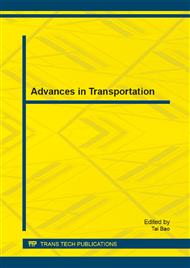p.384
p.388
p.395
p.399
p.405
p.410
p.415
p.422
p.427
Thinking of Comprehensive Energy-Saving System Construction for Urban Rail Transit
Abstract:
The High Energy Consumption of the Current Urban Rail Transit Industry, High Efficiency Energy Saving Measures must be Taken. this Paper Entity from the Traction Energy Consumption, Building Structure and Operating Equipment Aspects of the Current Situation, Described the Energy Saving Strategies. Aiming at the Present Problems Existing in Energy Saving Practice, this Article Puts Forward the Comprehensive Energy Saving System which Contains Optimization Design in Planning Period, Low Resource Consumption in Construction Period, Energy Saving Work in Operation Period. above all, Implement Energy Saving Practice at Every Concrete Work of Reaching.
Info:
Periodical:
Pages:
405-409
Citation:
Online since:
January 2014
Authors:
Price:
Сopyright:
© 2014 Trans Tech Publications Ltd. All Rights Reserved
Share:
Citation:


